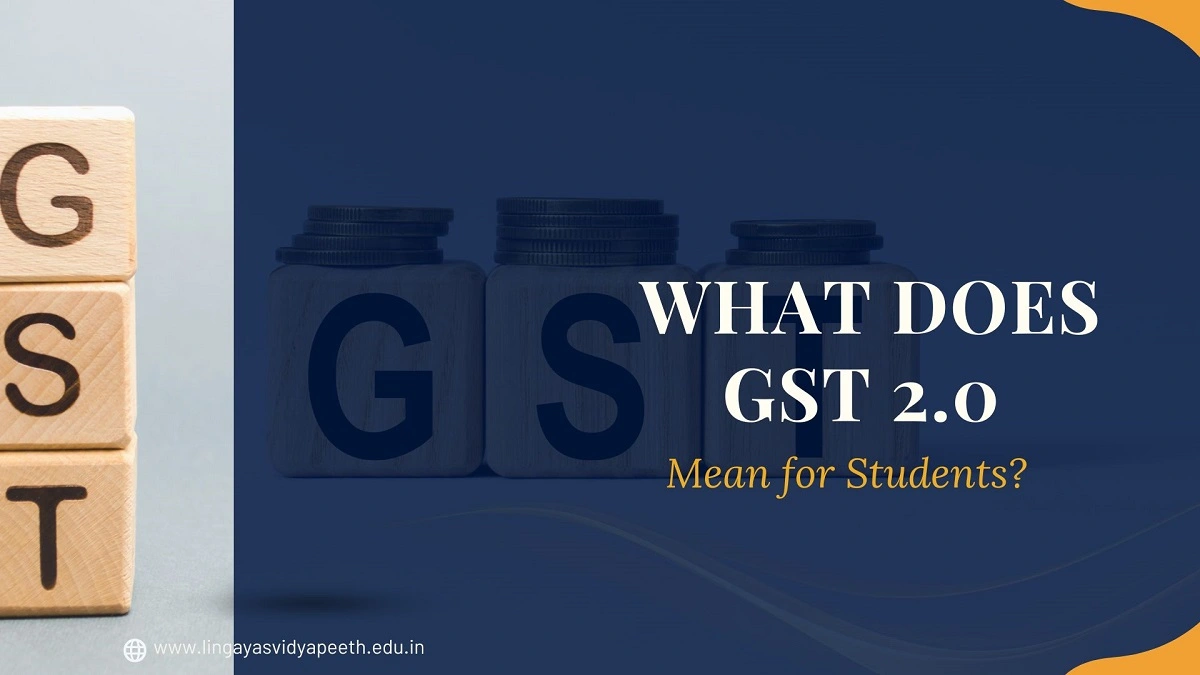Home » What Does GST 2.0 Mean for Students?

Imagine heading to school without worrying about paying extra for notebooks or pencils. Sounds amazing, right? That’s the kind of change GST 2.0 brings. You may have heard people talking about it, but don’t stress. This guide breaks it down simply. We’ll explore what GST 2.0 is, how it affects your daily life as a student, and why it’s good for your wallet and future. By the end, you’ll understand it without falling asleep in a lecture.
GST stands for Goods and Services Tax. It replaced many old taxes in India in 2017. Think of it as one umbrella covering almost everything you buy—from snacks to school supplies. Fast-forward to today: September 22, 2025. That’s when GST 2.0 kicked in. The government introduced it to make the system simpler and fairer. It’s not just jargon—these changes actually make life easier for families like yours.
GST 2.0 is the upgraded version of the original tax system. The government, led by Prime Minister Narendra Modi, launched it to fix some problems from before. Earlier, taxes had confusing slabs like 5%, 12%, 18%, and 28%. Now, they are mostly simplified into two main rates: 5% for essentials and 18% for most other things.
Key changes include:
These changes aim to fight inflation and strengthen the economy. Experts predict overall prices could drop 1–2% by early 2026. That means families will have extra money for little treats—like a snack after class or a new set of pens.
Taxes may feel like adult stuff, but GST 2.0 hits close to home—right in your backpack. Education costs have been climbing, with families spending ₹15,000–20,000 yearly on supplies alone. The good news? This reform cuts those bills.
Here’s how it helps students:
Picture this: your family saves ₹300–400 on back-to-school shopping. That could mean new sneakers, extra art supplies, or even a little outing. Lower costs also mean more kids in rural areas can afford quality education without missing meals.
GST 2.0 doesn’t stop at stationery. Cheaper transport, like bikes and buses at 5% tax, makes commuting to school easier. Economic growth could also create 1–2 million new jobs in education and tech by 2027. That’s good news for youth unemployment, which is around 15% currently.
Some things still carry higher tax, like e-books and fancy gadgets, so digital learners may not see as much saving yet. But overall, the changes make life more affordable for students.
Look at the bigger picture: GST 2.0 affects the world you’ll step into after exams. Inflation, which troubled families at 6–7% last year, should drop to 4–5%. That means steadier prices for college fees, hostels, and even your first paycheck.
For girl students, it’s particularly impactful. Savings on supplies help families keep daughters in school longer. Dropout rates for high school girls have already fallen 10% after similar reforms. This could push them even lower.
GST 2.0 also nudges sustainability. Recycled notebooks and eco-friendly stationery now get zero tax. Your generation cares about the planet, and this change supports that.
So, what does GST 2.0 mean for you? Simpler taxes, lighter bags (financially speaking), and a brighter path toward your goals. Even small changes, like a tax cut on your favorite pen, add up.
Here’s a quick action plan:
India’s tax revolution is here, and students are right at the heart of it. Understanding GST 2.0 isn’t just smart—it’s empowering.
Also Read
AICTE Launches Project PRACTICE 2025 to Build Job-Ready Skills
Artificial Intelligence courses after 12th commerce
Mechanical Engineering courses after 12th
Future of Higher Education in India: NCrF and AI
RECENT POSTS
CATEGORIES
TAGS
Agriculture Agriculture future AI Architecture artificial intelligence Bachelor of Commerce BA English BA Psychology BTech AIML BTech CSE BTech cybersecurity BTech Engineering Business management career Career-Specific Education career guide career option career scope Civil engineering commerce and management Computer Science Computer science engineering Data science degree education Engineering Engineering students English Literature english program Fashion Design Fashion design course Higher Education Journalism journalism and mass communication law Law career Machine Learning mathematics MBA MBA specialization Mechanical Engineering Pharmacy Psychology Research and Development students
Nachauli, Jasana Road, Faridabad, Haryana
Address: C-72, Second Floor, Shivalik, Near Malviya Nagar,
Above HDFC Bank, New Delhi 110017
Landline No. - 011-46570515 / 45138169 / 41755703
Mobile No. - +91-7303152412 / +91-7303152420 / +91-9311321952
Toll Free: 1800-120-4613
Mobile : 8447744303 | 8447744304 | 8447744306 | 8447744309
8700003974 | 8700003411 | 8700003749
Copyrights © 1998 - 2025 Lingaya's Vidyapeeth (Deemed To Be University). All rights reserved.
LV only conducts physical/online verification of any document related to examination on the following email id:
It is important to note that the following email IDs and domains are fraudulent and do not belong to our university.